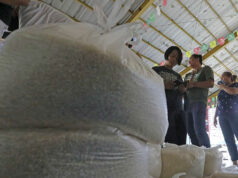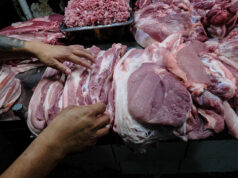Agriculture trade deficit widens in Q4
By Ranier Olson R. Reusora
Researcher
THE TRADE DEFICIT in agricultural commodities widened in the fourth quarter of 2017, the Philippine Statistics Authority (PSA) said.
Data from the PSA released last Wednesday indicated outbound shipments of agricultural goods worth $1.3 billion in the fourth quarter, down 15.34% year on year.
Meanwhile, around $2.89 billion worth of farm products were shipped into the country during the period, up 2.72% from a year earlier.
As a result, the agriculture trade deficit was at $1.59 billion in the three months to December, up 24.37%.
Agriculture accounted for 9.74% or $4.194 billion of total trade, which was $43.043 billion in the fourth quarter.
The Philippines incurred its biggest agriculture deficit with the Association of Southeast Asian Nations at $838.33 million followed by the United States ($305.5 million), Australia ($99.92 million), and the European Union ($14.25 million).
On the other hand, trade in farm goods with Japan was in surplus by $129.54 million.
Animal or vegetable fats and oils were the top agricultural export at $340.07 million or 26.15% of the total goods shipped.
Other top farm goods exports include edible fruit and nuts ($330.33 million); fish and crustaceans ($126.04 million); preparations of meat, of fish or of crustaceans ($107 million); preparations of vegetables, fruit, nuts or other parts of plants ($93.84 million); and tobacco and manufactured tobacco substitutes ($83.53 million).
The country’s top import, meanwhile, were residues and waste from the food industries at $355.85 million, followed by miscellaneous edible preparations ($353.15 million); cereals ($348.48 million); animal or vegetable fats and oils ($323.51 million); and meat and edible meat offal ($255.66 million).
“The increase in imports might not have been enough to offset the decline in exports. Although, the rise in imports may indicate a growing domestic demand as intended imports may have been consumed domestically,” said Ruben Carlo O. Asuncion, chief economist at Union Bank of the Philippines.
Nevertheless, trade in agricultural goods may improve this year: “I expect better [agriculture] exports with more external demand. At the same time, I expect [agriculture] imports to rise as well as domestic demand is anticipated to increase,” he said.



